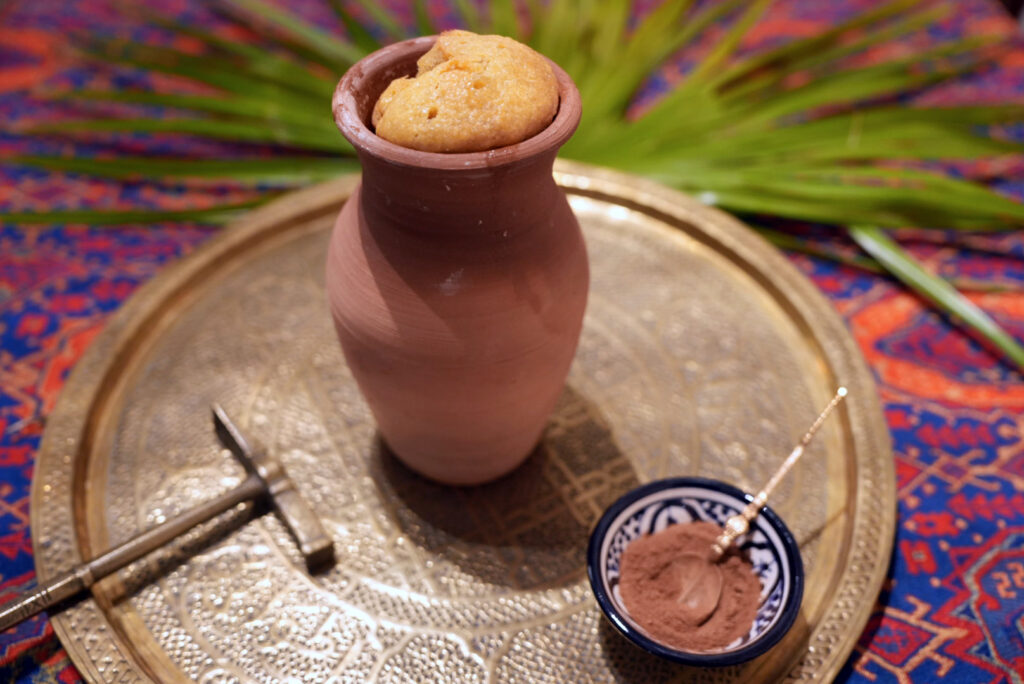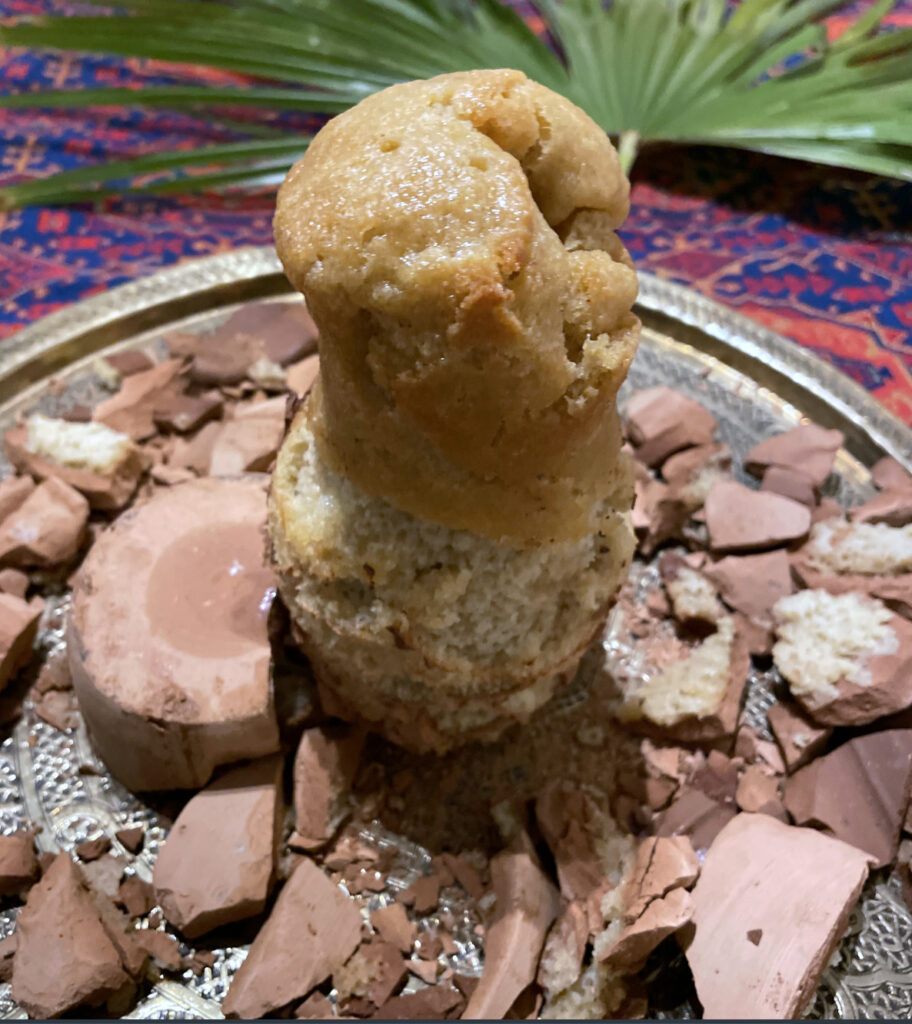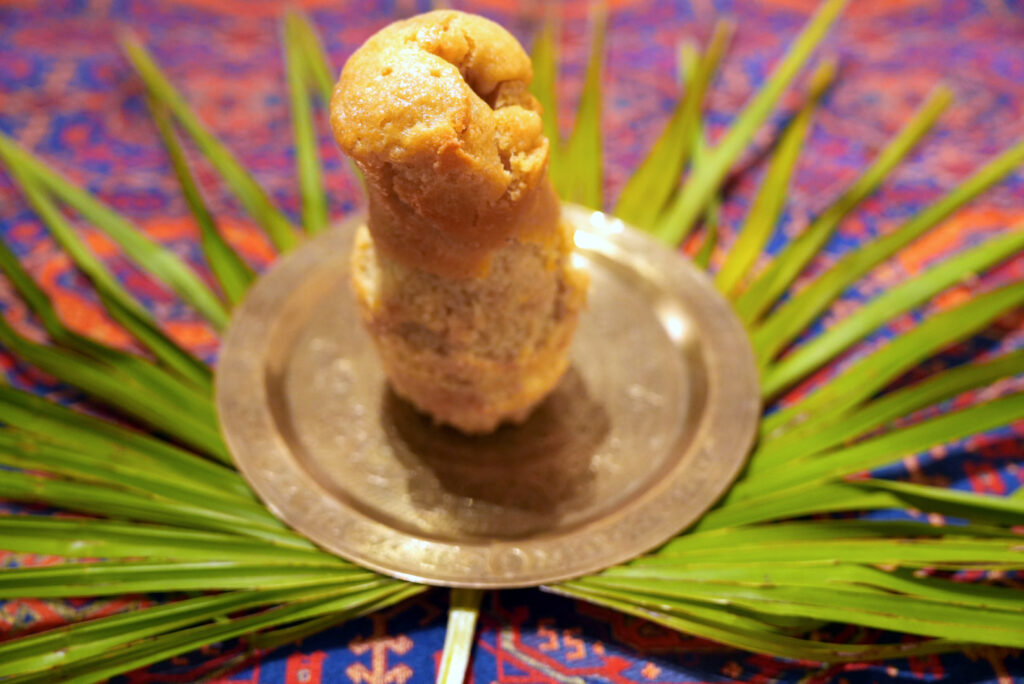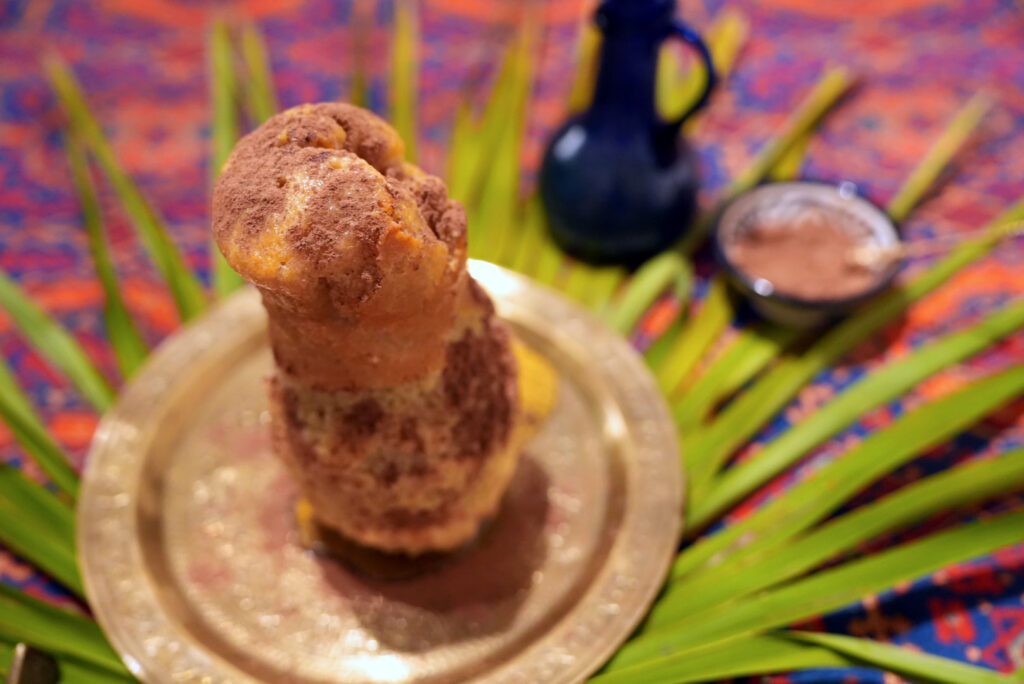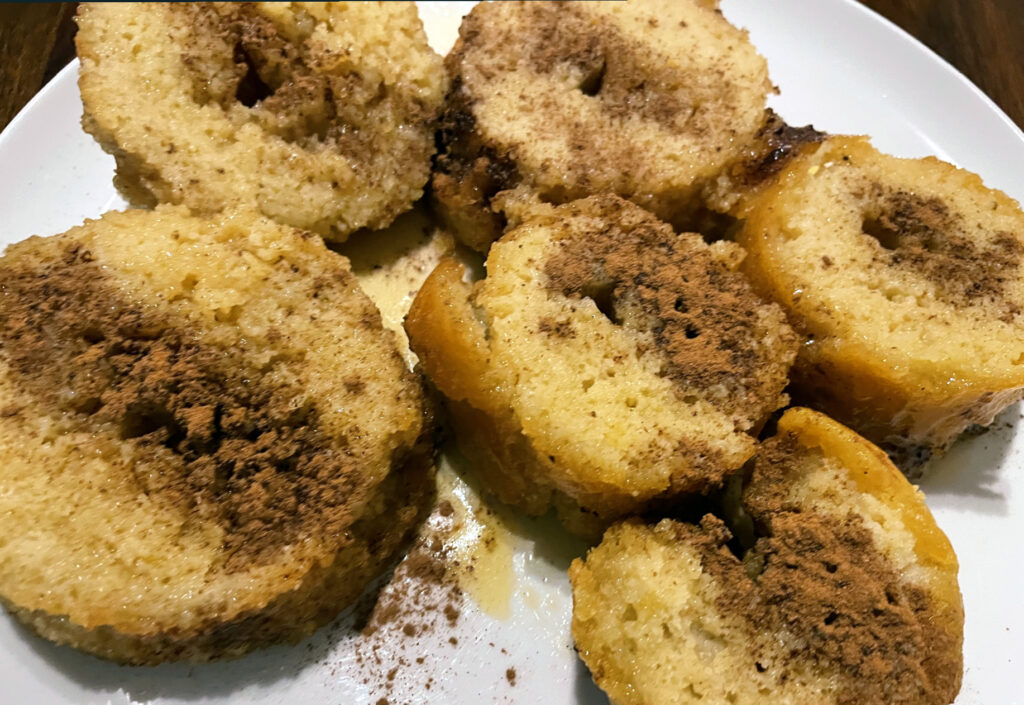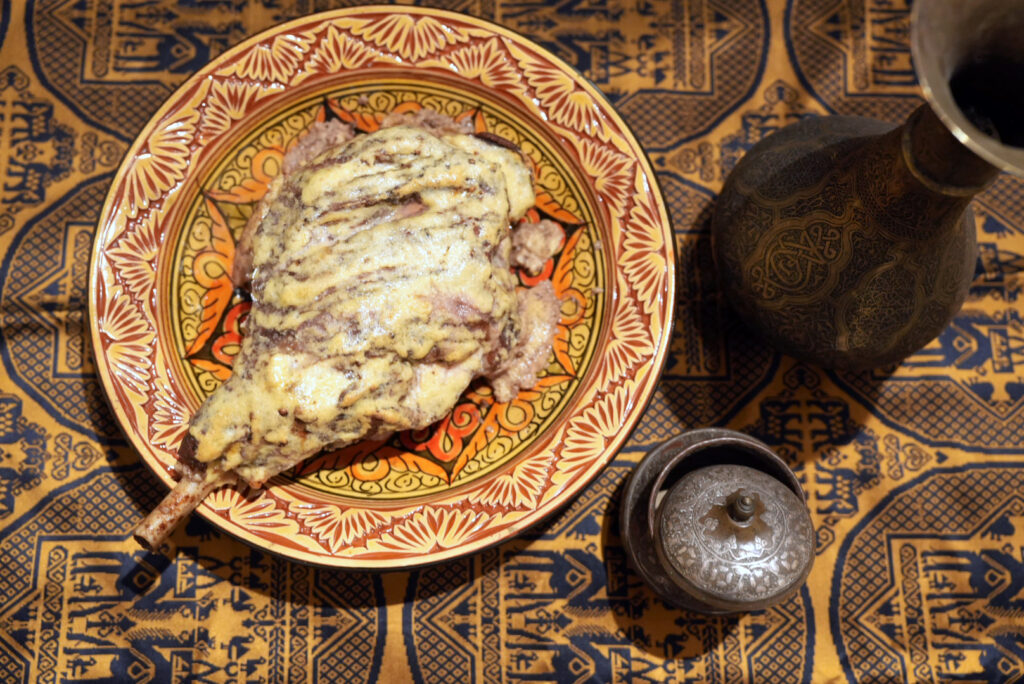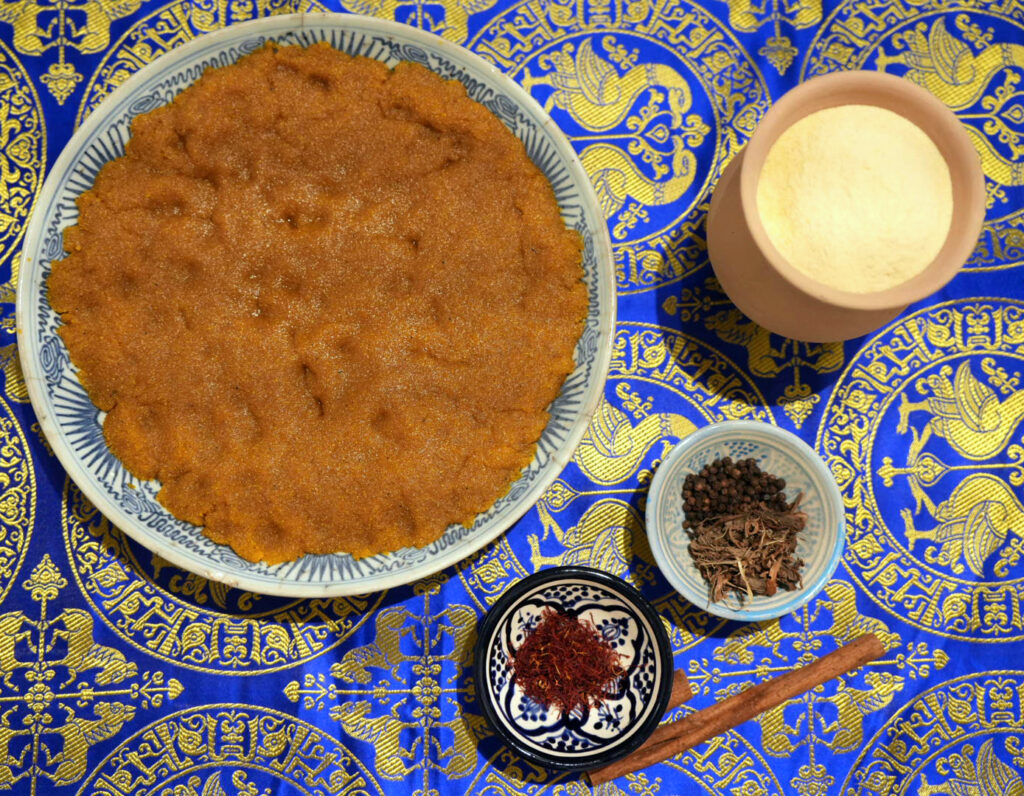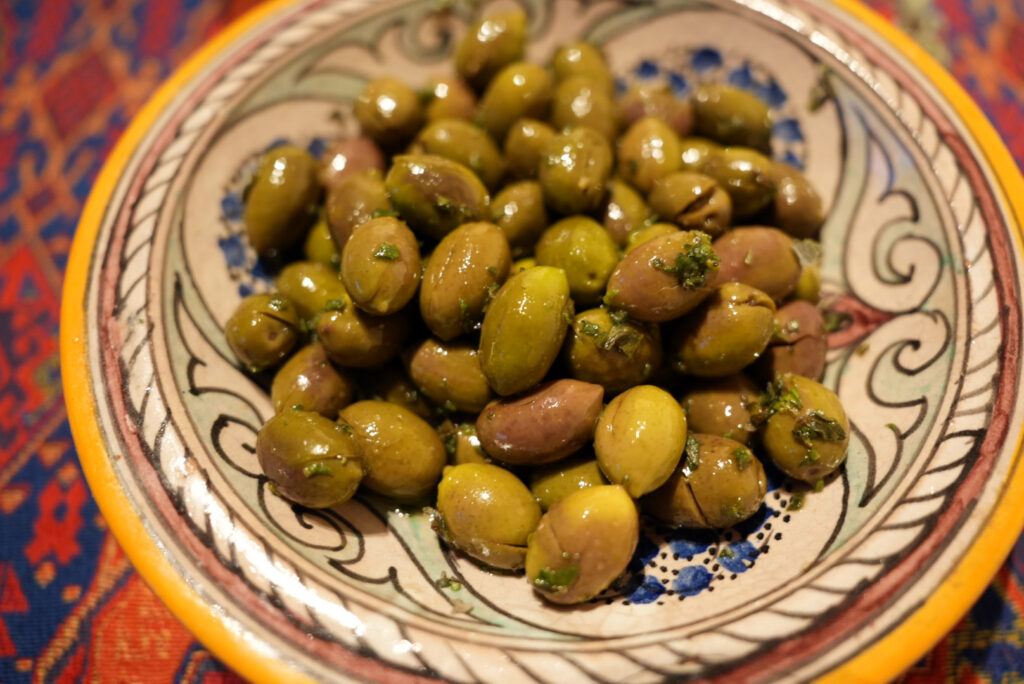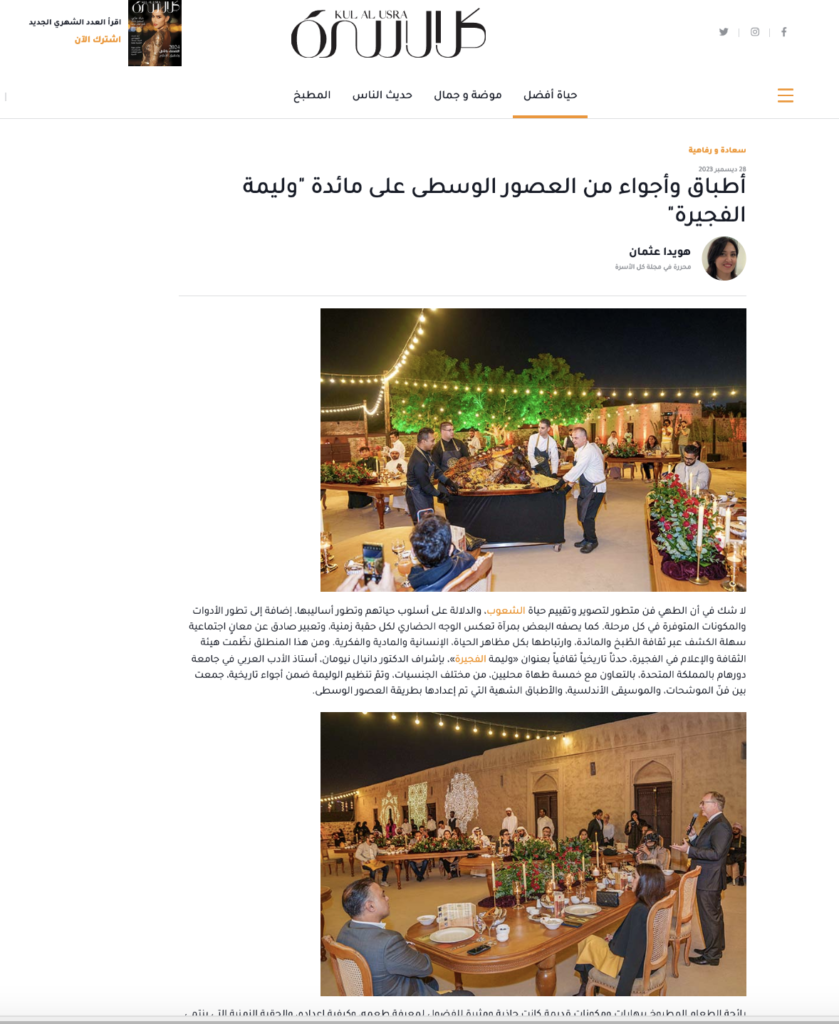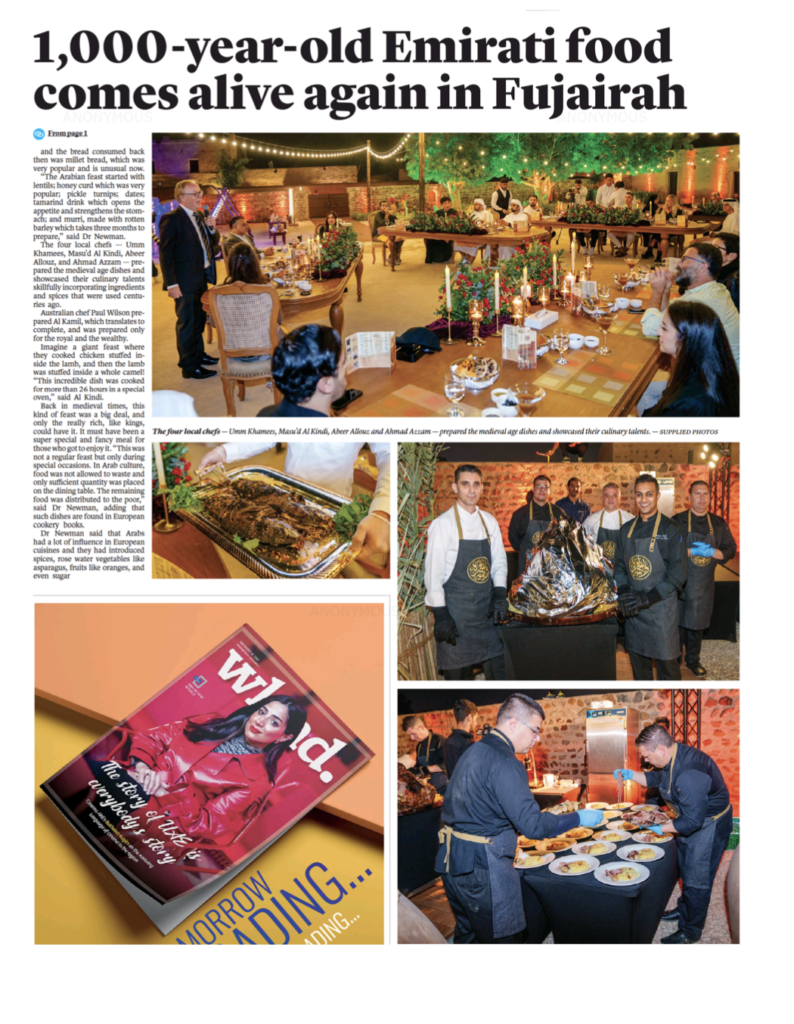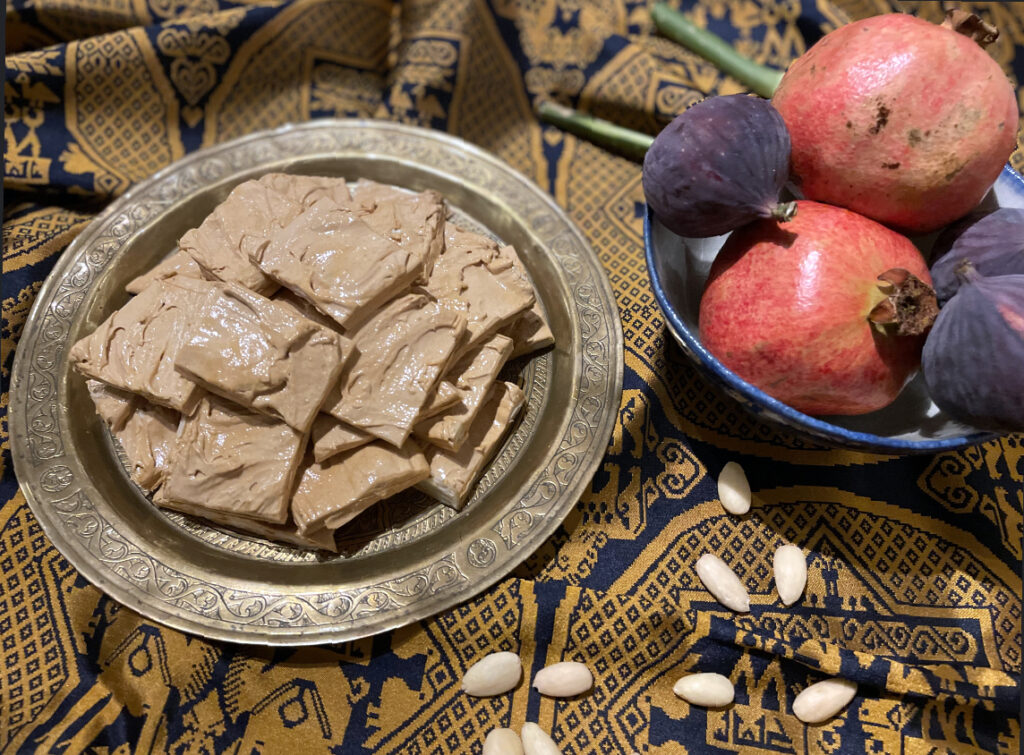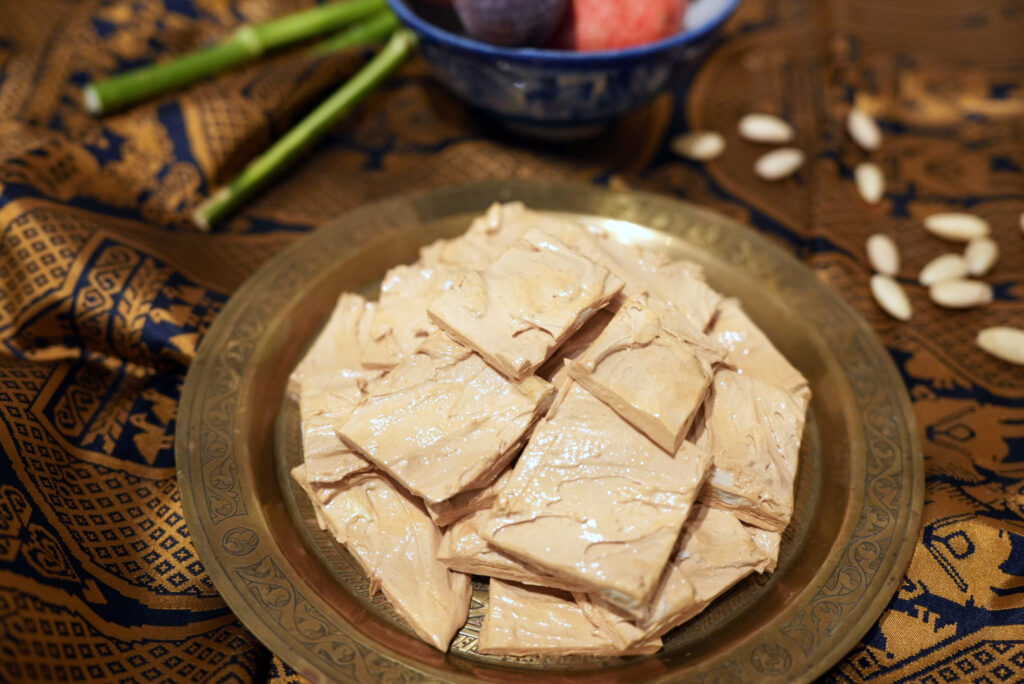A recipe from The Exile’s Cookbook for a jar-shaped cake, though in the text it is called an isfanj (إسفنج), which usually denotes a doughnut. It is made by making a smooth slack dough with semolina flour. After it has risen, it is placed in an earthenware jar generously coated with olive oil. The dough should come up to the neck of the jar and in the middle a stick — the text specifies that it is should be a ‘palm frond stalk or cane reed without its knots’ — smeared with olive oil is placed. Once this is done, it is time to bake the cake. When it is ready, the stick is removed and some honey and clarified butter (samn) is poured down the hole. It is left to settle before breaking the jar and liberating the cake! But be careful that the cake comes out in one piece! One can imagine that this might have been done by the medieval cooks at the table to wow diners with their expertise! Of course, the adage at the time was ‘more is more’, and so before eating it, some more clarified butter and honey is poured down the hole in the middle of the cake, which is also given a good dusting with cinnamon. A fluffy honey delight, no mistake!!
